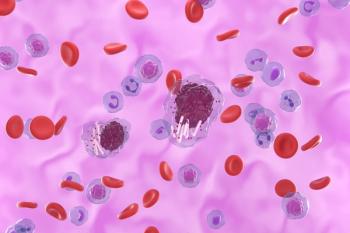
Proactively Protecting Mental and Physical Health During Peak Allergy Season With Gary Falcetano, PA-C, AE-C
Gary Falcetano, PA-C, AE-C, explains that proactively managing seasonal allergies can significantly decrease the overall inflammatory burden, thereby improving both physical symptoms and potentially mitigating neuroinflammation's impact on mental well-being.
Gary Falcetano, PA-C, AE-C, US scientific affairs manager for allergy at Thermo Fisher Scientific, emphasizes in this interview with in an interview with The American Journal of Managed Care® (AJMC®) that inflammation is central to the burden of seasonal allergies on both mental and physical health. He explains that allergies are a cumulative threshold disease, meaning most patients are reactive to multiple triggers, often a mix of year-round allergens like dust mites, molds, and pet dander, compounded by seasonal pollens.
This additive exposure can push individuals beyond their allergic threshold, leading to severe and difficult-to-control symptoms, even with medication. Falcetano recommends that once patients confirm their allergies and identify specific triggers, they should implement preventative measures to reduce their overall allergen load. By controlling overt allergic symptoms, the overall inflammatory load is reduced, which could, in turn, decrease neuroinflammation and positively impact brain regions involved in mood regulation.
This transcript was lightly edited for clarity.
Transcript
AJMC: What steps can patients with seasonal allergies take to proactively protect their mental and physical health during peak allergy season, especially considering the inflammatory burden and its impact on the brain?
Falcetano: Inflammation really is at the heart of everything we're talking about. Once patients have confirmed that they're allergic and they've identified their triggers, then they can institute preventative measures to reduce their overall allergen load. Allergy is a cumulative threshold disease and most patients with respiratory allergies have more than 1 trigger. Someone who's allergic to one thing is usually allergic to something else.
Exposure to each of these triggers can really add to that cumulative allergic load and inflammatory load, and cause patients to exceed their individual allergic thresholds when experiencing symptoms. Often patients are allergic to year-round allergic triggers like dust mites, molds, or pets, and then when spring pollen season arrives, they begin experiencing increased and difficult-to-control symptoms—and it's all additive. It pushes them over that threshold. It makes the symptoms very difficult to control, even if they are allergic. Antihistamines may not cut it, even inhaled nasal steroids may not cut it.
By incorporating exposure-reduction strategies like using dust mite impermeable bedding covers, keeping windows closed, and keeping pets out of the bedroom, patients can be proactive in managing what is driving their symptoms. Looking at that total burden and then being proactive in reducing exposure at least somewhat, again, to all the things that you're sensitized to can improve their symptomatology and make medications more efficacious.
When obvious allergic symptoms are controlled, the runny nose, cough, postnasal drip, we would hope that the overall inflammatory load will decrease. Decreasing cytokines and other inflammatory mediators from entering the brain could potentially improve neuroinflammation and the downstream effects on the brain regions that are involved in mood regulation.
Newsletter
Stay ahead of policy, cost, and value—subscribe to AJMC for expert insights at the intersection of clinical care and health economics.









































